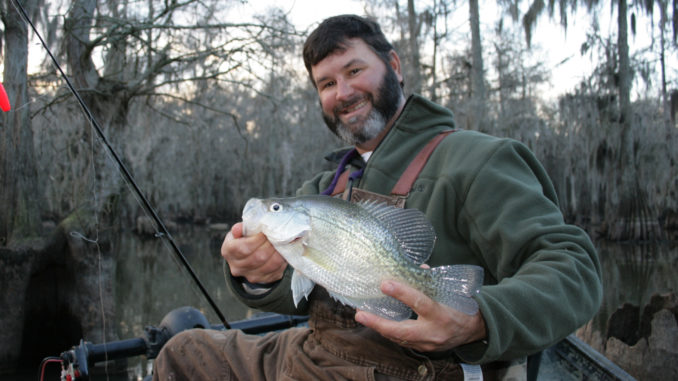
Inaugural cormorant season approaches
Some of the biggest news this month is the hunting season for cormorants, set to begin on Feb. 2. Of no surprise to local fishermen, Lake Marion and Lake Moultrie are overwhelmed with cormorants. The great quantity of fish these birds consume has apparently caused concerns regarding the forage base in the lakes, as well as other natural resources.
The S.C. Department of Natural Resources announced plans for a cormorant season nearly two months long to start after the close of duck season. According to SCDNR’s Derrell Shipes, double-crested cormorants may be taken beginning Feb. 2 and ending March 31. Legal hours begin 30 minutes before sunrise and end 30 minutes after sunset. Cormorants are protected under the Federal Migratory Bird Treaty Act; taking them or similar species without a permit or by methods, or in areas, not prescribed by permit, is strictly prohibited.
Two training sessions were held in January, and a third is scheduled for Saturday, Feb. 8, at 2 p.m. at the auditorium at Santee Cooper headquarters in Moncks Corner. Persons wishing to participate in the cormorant removal program are required to attend a training sessions, complete an application and a SCDNR Volunteer Form. Pre-registration is not required.
“The training will emphasize safety, area of action, species identification, weapon restrictions and program dates and hours,” Shipes said. “After participating in the training session, a permit will be issued to take double-crested cormorants. Only those who attend one complete training session will be granted a permit.
“All participants… will be required to have both a permit and valid South Carolina hunting license at all times during removal activities. SCDNR is authorized by the U.S. Fish & Wildlife Service to designate agents for this action under the Depredation Order for Double-crested Cormorants to Protect Public Resources.”
Shipes said since the hunt is approved as a depredation event, there will be no limits, daily or seasonal, for the birds. He said there are no shotshell restrictions beyond the required use of non-toxic shot.
Shipes said the taking of double-crested cormorants will be restricted to the legal boundaries of the Santee Cooper lakes and will be allowed only in areas where waterfowl hunters can legally hunt waterfowl.
“We are trying to encourage a situation where the forage-fish populations feed the gamefish, not the cormorants,” he said. “These birds are impacting both the forage fish that we are trying to pass into the Santee Cooper lakes through our fish lift and the fish that occur there naturally, and we feel the numbers of cormorants are such that is impacting our ability to manage the fishery.”
Cormorants are large birds, 24 to 34 inches long, with black feathers and a distinctive orange bank from the top of the bill around the eyes and under the neck. They swim on the surface and dive to chase fish.
The idea of a hunting season to try to reduce cormorant numbers, especially during the winter when the population swells with migratory birds, has been applauded by fishermen and guides. The migratory cormorants begin showing up in the fall and stay on the lakes during the winter, Shipes said.
SCDNR has done an admirable job in getting this approval. Although cormorants are federally protected under the Migratory Bird Treaty, SCDNR was able to obtain a depredation order from the U.S. Fish and Wildlife Service because of growing evidence their numbers are impacting the lake’s fishery populations.
“This is legally sound, and we believe it is in the best interests of the fishery on the Santee Cooper Lakes,” Shipes said. “How effective it will be we don’t know, and we don’t know how many birds will be taken.”
But if successful, it’s possible that cormorant hunting could be continued or even expanded to other areas. That will likely depend on how hunters abide by the rules they will be given in the training sessions.
The fishing news on the Santee Cooper lakes will actually begin to improve considerably this month. Some big largemouth bass are usually taken, particularly toward the middle to the end of the month, as they begin to bed. Live bait as well as crankbaits and slow-moving bottom bumpers will produce god results in both lakes in shallow water.
Some striper action will likely begin toward the end of the month as the fish begin to migrate upriver. While the better and faster-paced action usually occurs in March, heavy fish sometimes are the first to make the journey. Most anglers will typically have to catch their own bait, threadfin or big gizzard shad, in February before the herring season opens in March. But those baits can be very productive, especially as cut bait early in the season.
Catfish action will begin to improve with some big blue catfish taken on windy banks in the main body of both lakes as well as up the river by anglers targeting stripers with cut bait.
Guide Andy Pack of Packs Landing said crappie and largemouth bass will typically be biting in the upper part of Lake Marion, especially in the swamp.
“If we have good water conditions, we usually have some good crappie fishing in the upper end of the lake during February,” Pack said. “And largemouth will usually be caught in good numbers and large sizes on live shiners or large plastic worms.”



Be the first to comment